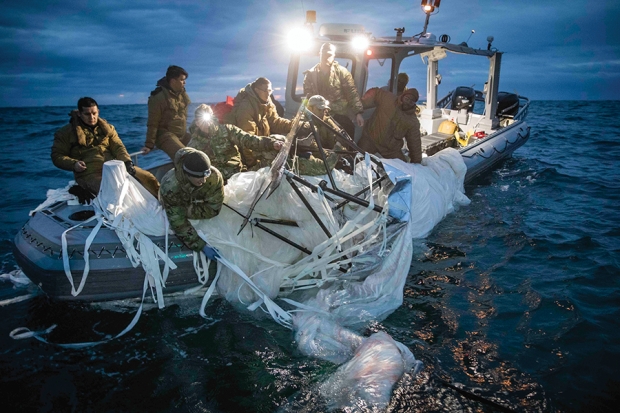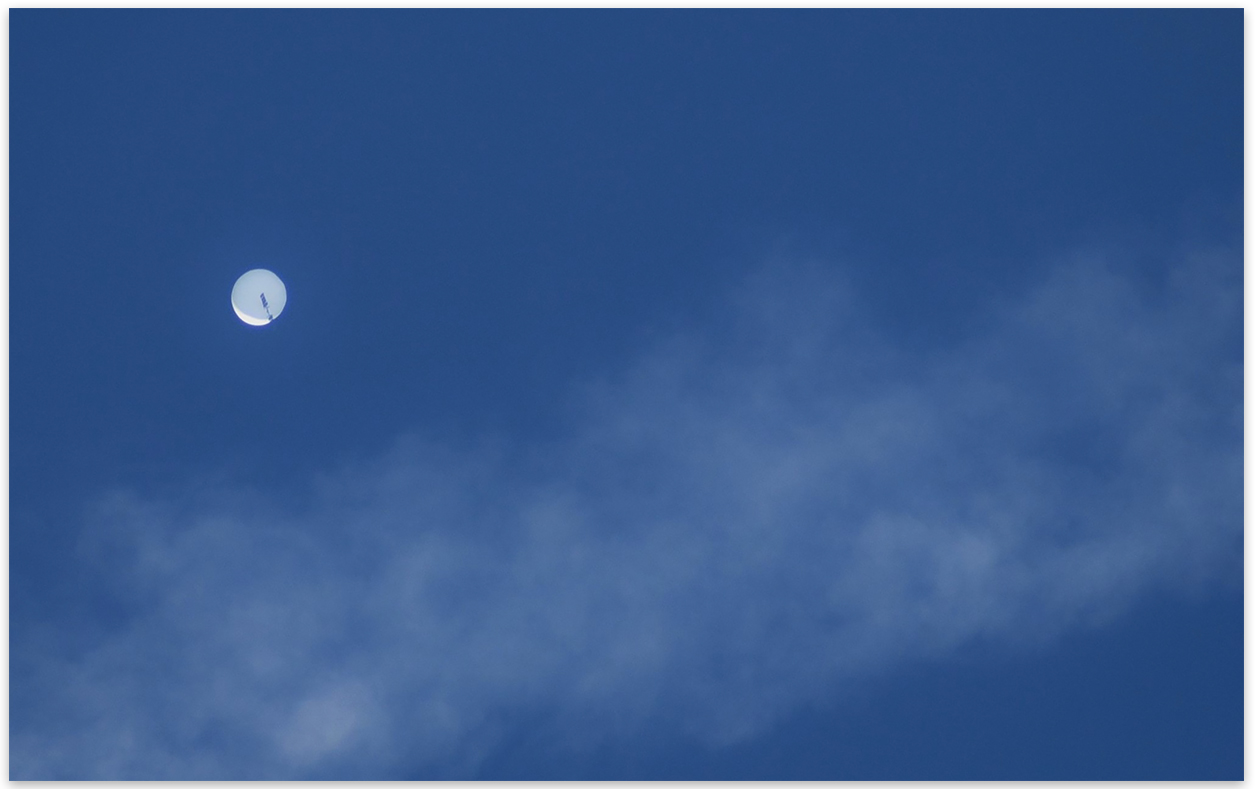The Day High-Flying Spies Came to Myrtle Beach

Not since German U-boats patrolled just off the shore of the Grand Strand during WWII has a foreign power so invaded our territory that military intervention was deemed necessary. We’re referring, of course, to the alleged Chinese spy balloon that drifted our way in February, and that briefly, but proudly, put Myrtle Beach in the national spotlight. The balloon, as the world now knows, was dramatically plucked from our Grand Strand skies courtesy of U.S. Air Force F-22s, dispatched out of Virginia, and a single AIM-9X supersonic Sidewinder missile, one bright, brisk winter afternoon.
Most of us living in or visiting the region knew the large 200-foot-tall balloon was coming. The Chinese had admitted it was theirs and they referred to it as an off-course “civilian, unmanned airship.” We’d been watching the reports of it drifting over our region. We were told that if prevailing winds stayed true, the balloon could arrive in our area on Saturday, February 4.
Many were prepared for this invasion of our airspace and were already poised and on the lookout by Saturday morning when it became clear that a visit was likely. Others were unaware of the balloon’s arrival until our homes and businesses along the Grand Strand shook violently around 2:40 p.m., forcing many of us off our couches and outside to make sure we hadn’t suffered an earthquake.
Earlier in the week, our government had been tight-lipped about plans for the balloon, but many speculated that since it hadn’t been shot down, the military would probably wait until it was over the ocean, which is precisely what it did, fueling already tense relations with The People’s Republic of China.
About six nautical miles east of 76th Ave. North and the oceanfront in Myrtle Beach, stealth fighter jets, F-22 Raptors, flew overhead, their contrails circling the bright white spot in the blue sky. Then a single Sidewinder missile was launched. The jet and missile forming two visible contrails where there had been one. The missile denotated and destroyed the envelope of the errant “weather” balloon. It blew up without any obvious visual flame but was surrounded briefly by a strange white cloud as what was left fell into Long Bay in 47 feet of water.

Five Navy and multiple Coast Guard ships had already been deployed on the sea, hundreds of square miles of sky was designated a No-Fly Zone, and all commercial air traffic over much of the state had been halted, though some on commercial flights to Charleston and Myrtle Beach reported their pilots telling them over the intercom to “look out of their windows” to see the balloon long before it was dispatched by the Air Force. As the shredded balloon’s remains disappeared into the horizon, the show was over…but not the questions.
Air Force Gen. Glen VanHerck, commander of North American Aerospace Defense Command and U.S. Northern Command, said the debris field was about one square mile. Other reports had it larger. The balloon’s payload weighed more than a ton and was the size and mass of a jetliner. Many armchair and wannabe “military advisors” complained that the balloon traversed the bulk of the U.S. without impedance, and the Biden Administration took heat for that decision. Pentagon officials said the size and makeup of the balloon’s payload, and U.S. mitigation efforts defeating its communication capabilities, informed their decision to wait until it was over water.
Dozens of amateur and professional photographers, who were poised at the right time and place, caught much of the event as it happened, though with the balloon’s altitude of 60,000 to 65,000 feet and distance from shore, the photos are not of the highest resolution. West Virginian photographer Robin Filipiak, who resides in Myrtle Beach part-time, was one such lucky balloon-watcher. Her photos, courtesy of a Nikon D750 camera with telephoto lens, and her photographic skills, appear with this story, along with images supplied by the U.S. Navy.
Much is left to be told of the saga, some saying it may be years before all the debris is fully analyzed.